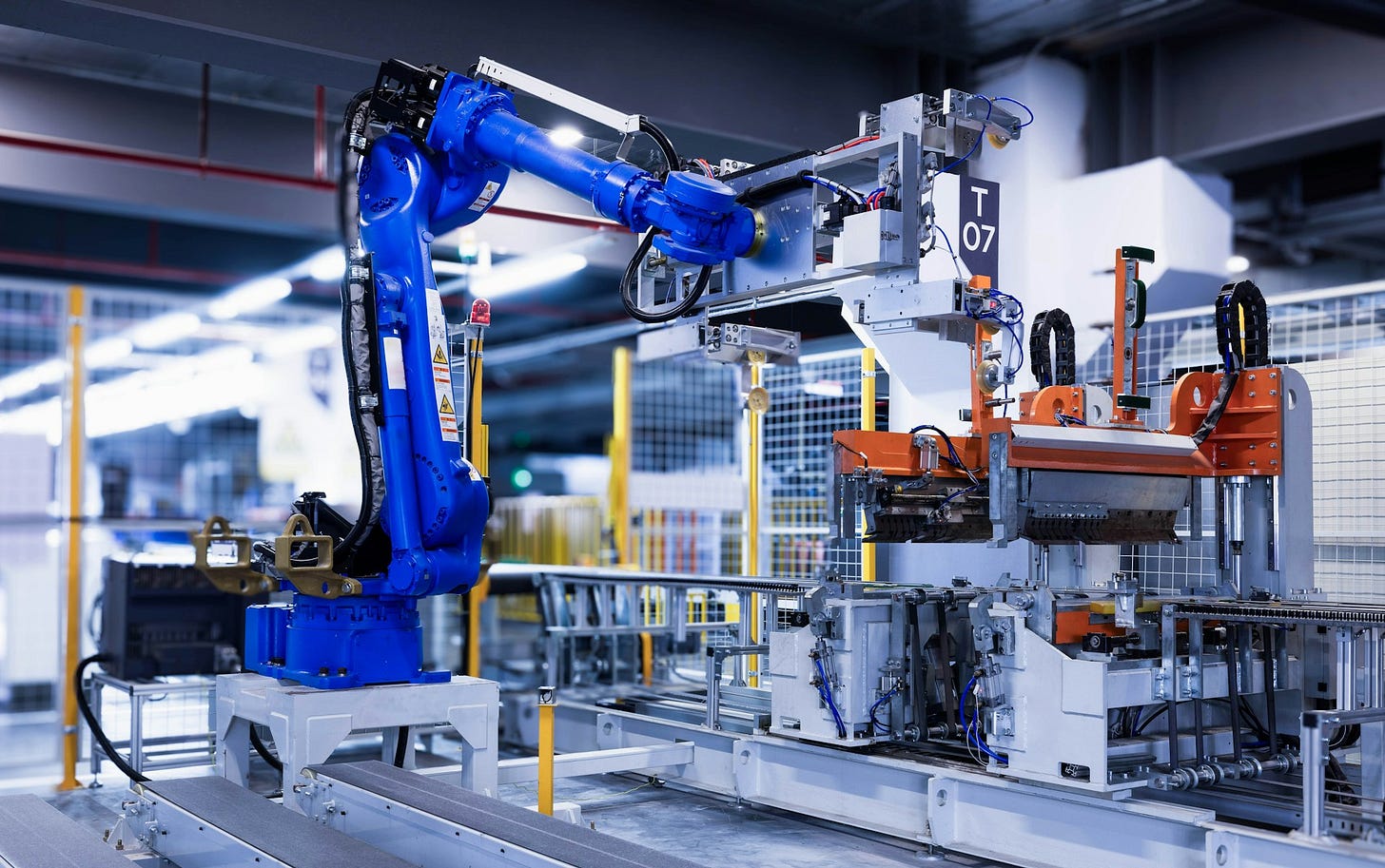More manufacturing
Robotic arm
In the article we’ll talk about advanced manufacturing and humanoid robots.
What defines advanced manufacturing
The manufacturing industry is currently undergoing its fourth industrial revolution, widely known as industry 4.0 or advanced manufacturing. This era is changing worldwide production by bringing together digital technologies, automation, and data exchange. The result is highly interconnected, intelligent, and flexible systems that move manufacturing beyond traditional assembly lines. This creates smart, agile production environments that can quickly adapt to market demands and optimize every part of a product's life cycle.
Industry 4.0 is marked by the convergence of several innovative technologies that bridge the physical and digital realms. It represents a shift from simple automation to truly intelligent and autonomous systems capable of communicating, analyzing, and acting on data in real-time. Key elements include:
Cyber-Physical Systems (CPS), these systems blend computing, networking, and physical processes. They monitor physical operations, create virtual representations of the real world, and make decentralized decisions.
Internet of Things (IoT) / Industrial Internet of Things (IIoT) involves connecting machines, sensors, devices, and even products to the internet. This enables real-time data collection, exchange, and monitoring across the factory floor and beyond.
Artificial Intelligence (AI) and Machine Learning (ML) are used for advanced data analysis, predicting when equipment needs maintenance, controlling quality, optimizing production schedules, and automating complex decision-making.
Big data analytics involves processing vast amounts of data generated by connected systems to uncover insights, optimize operations, and improve product quality.
Cloud computing provides scalable storage, computing power, and shared access to data and applications across the entire value chain.
Additive manufacturing (3D printing) allows for rapid prototyping, on-demand production, mass customization, and the creation of complex shapes that were previously impossible to achieve.
Robotics and collaborative robots are becoming more intelligent, flexible, and capable of working alongside humans, handling repetitive, high-precision, or hazardous tasks.
Augmented Reality (AR) and Virtual Reality (VR) are used for training, maintenance, remote assistance, and visualizing complex designs or real-time production data.
Digital twins are virtual models of physical assets, processes, or systems that are updated in real-time with data from their physical counterparts. This enables simulation, optimization, and predictive maintenance without affecting actual operations.
Reshaping global production
Advanced Manufacturing is not just about minor improvements; it's changing how goods are produced and distributed worldwide.
Increased efficiency and productivity
Robots and automated systems handle repetitive tasks, reducing human error and boosting output. AI-driven analytics forecast equipment failures before they happen, minimizing downtime and optimizing maintenance schedules. Real-time data helps manage energy consumption, material usage, and production schedules, leading to significant cost savings and reduced waste.
Enhanced flexibility and customization
Smart factories can quickly reconfigure to produce different product variations or switch between diverse product lines with minimal interruption. Technologies like 3D printing and flexible automation make it economically feasible to produce highly customized products for individual customers at scale, moving away from mass production of identical items. Digital interfaces allow customers to personalize designs, materials, and features, with automated systems adjusting production accordingly.
Improved quality and reduced defects
IoT sensors and AI-powered vision systems continuously monitor product quality, identifying defects early in the process with greater accuracy than human inspection. Data analytics pinpoints the root causes of defects and inefficiencies, leading to continuous improvements in manufacturing processes.
Reshaping global supply chains and location decisions



